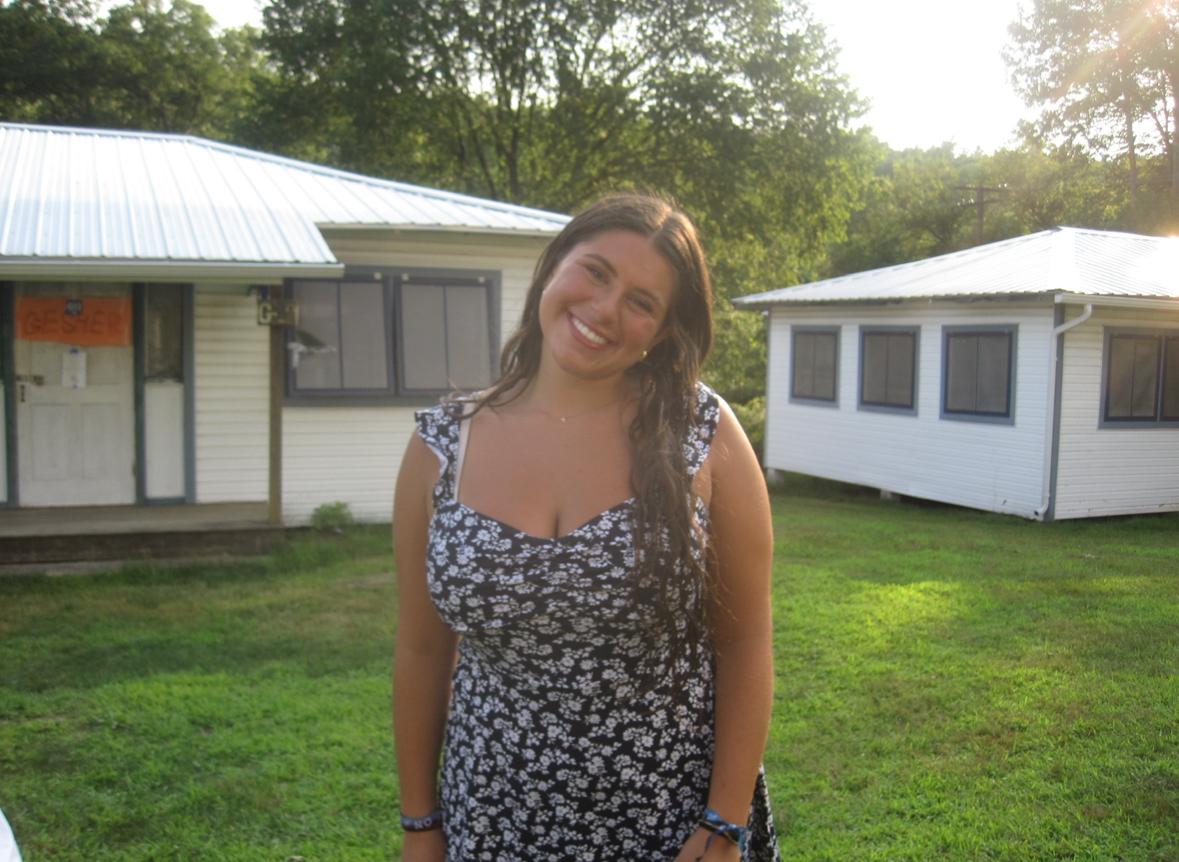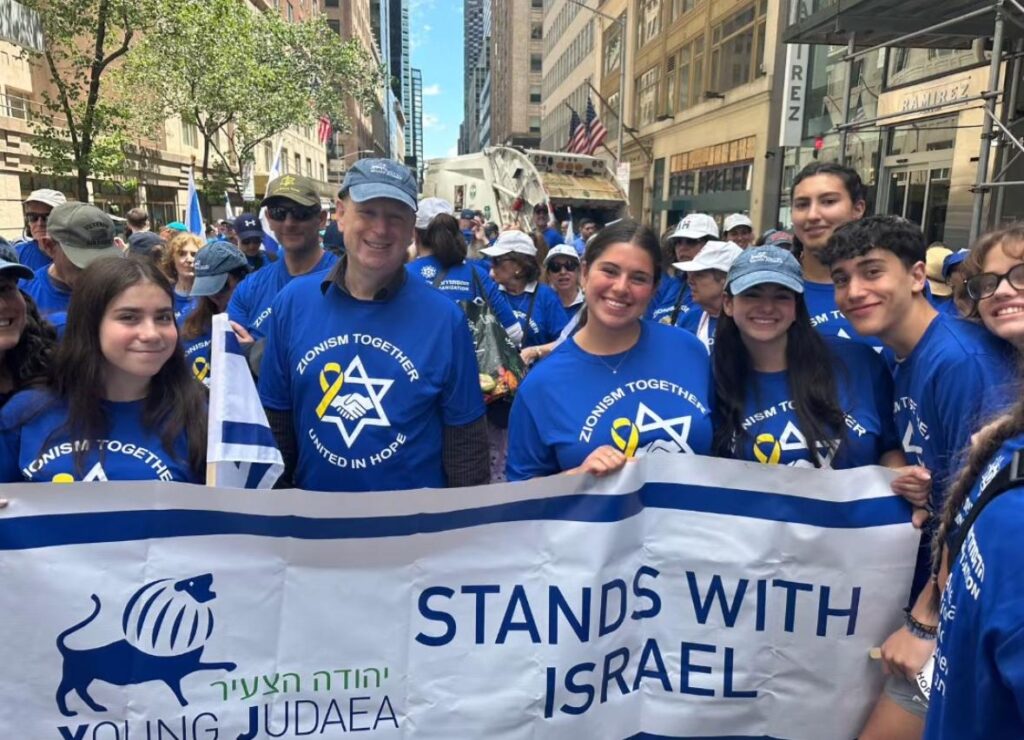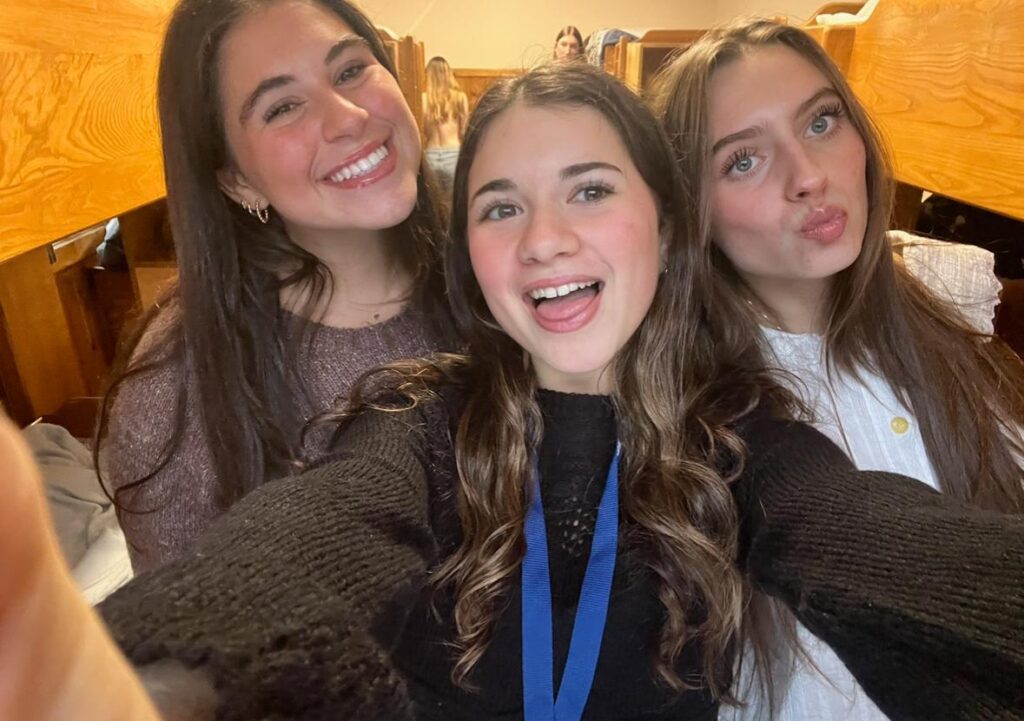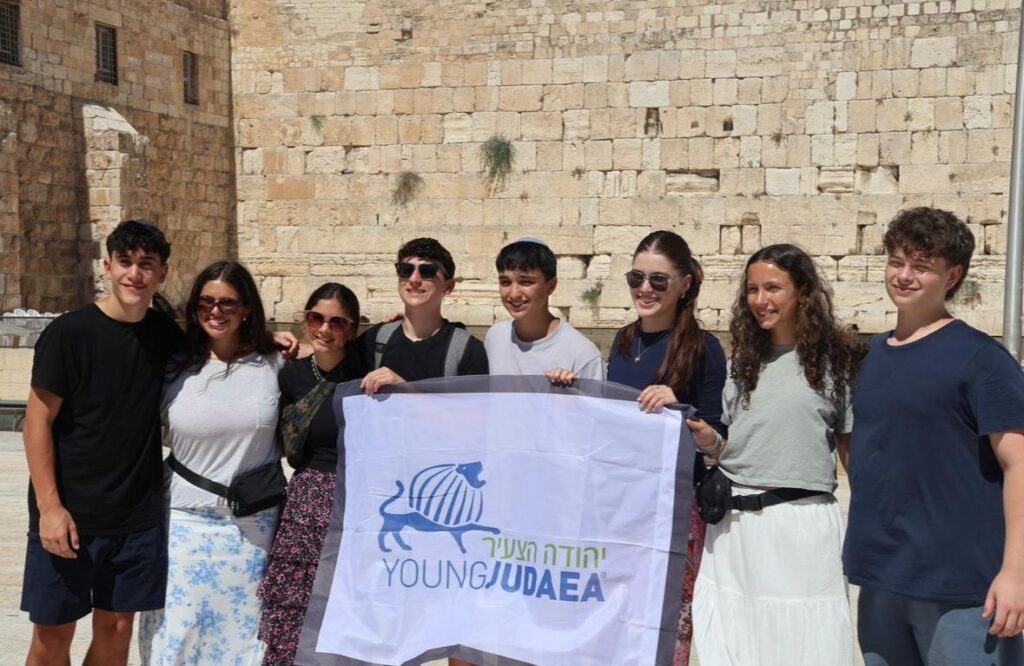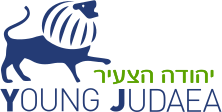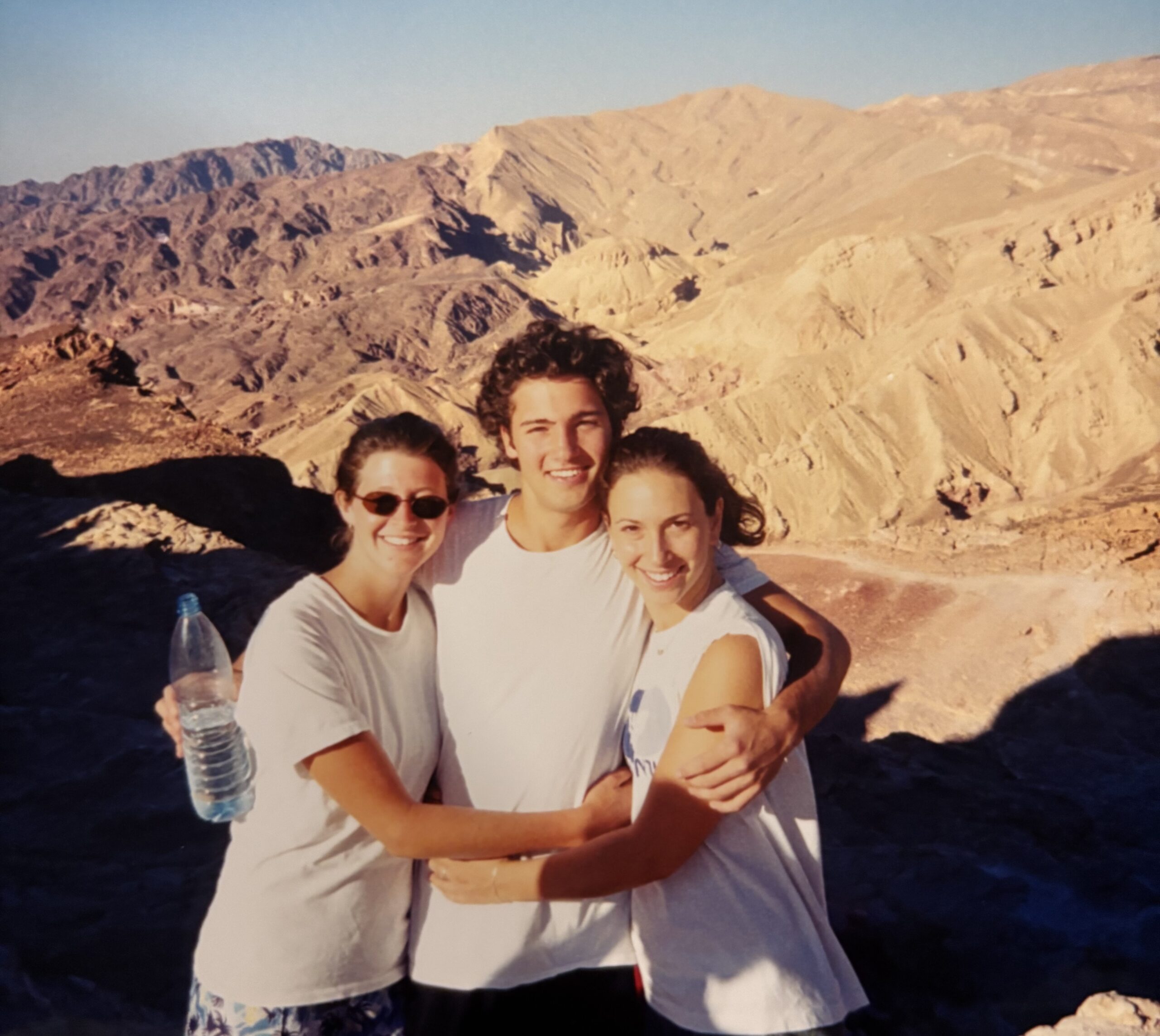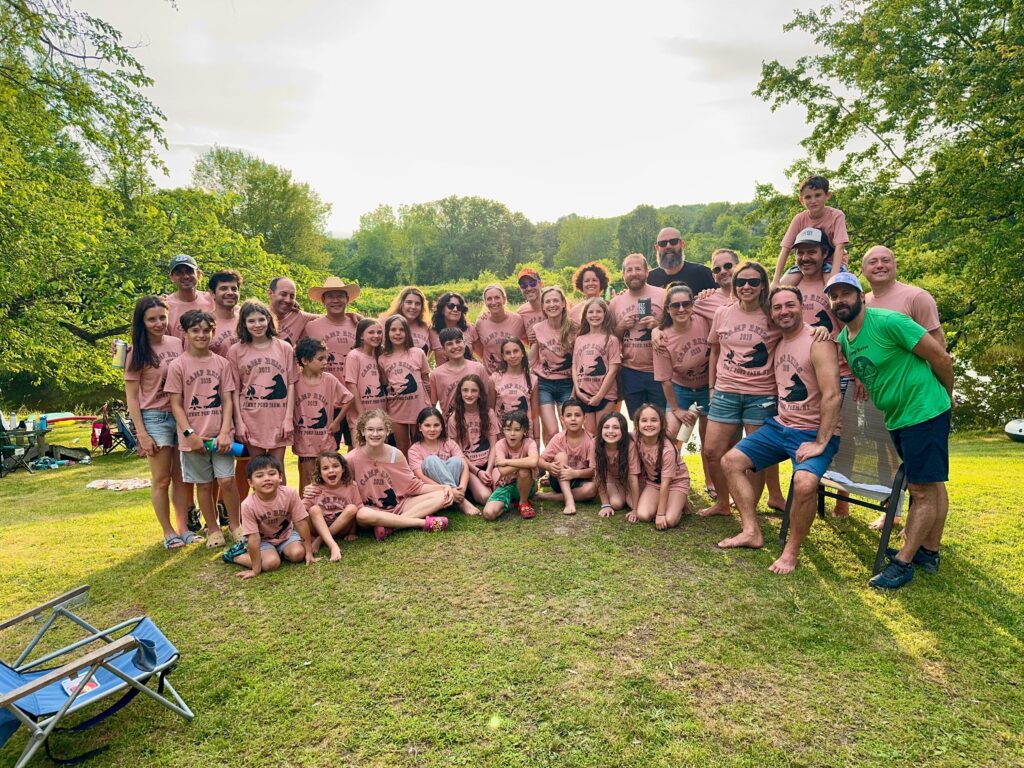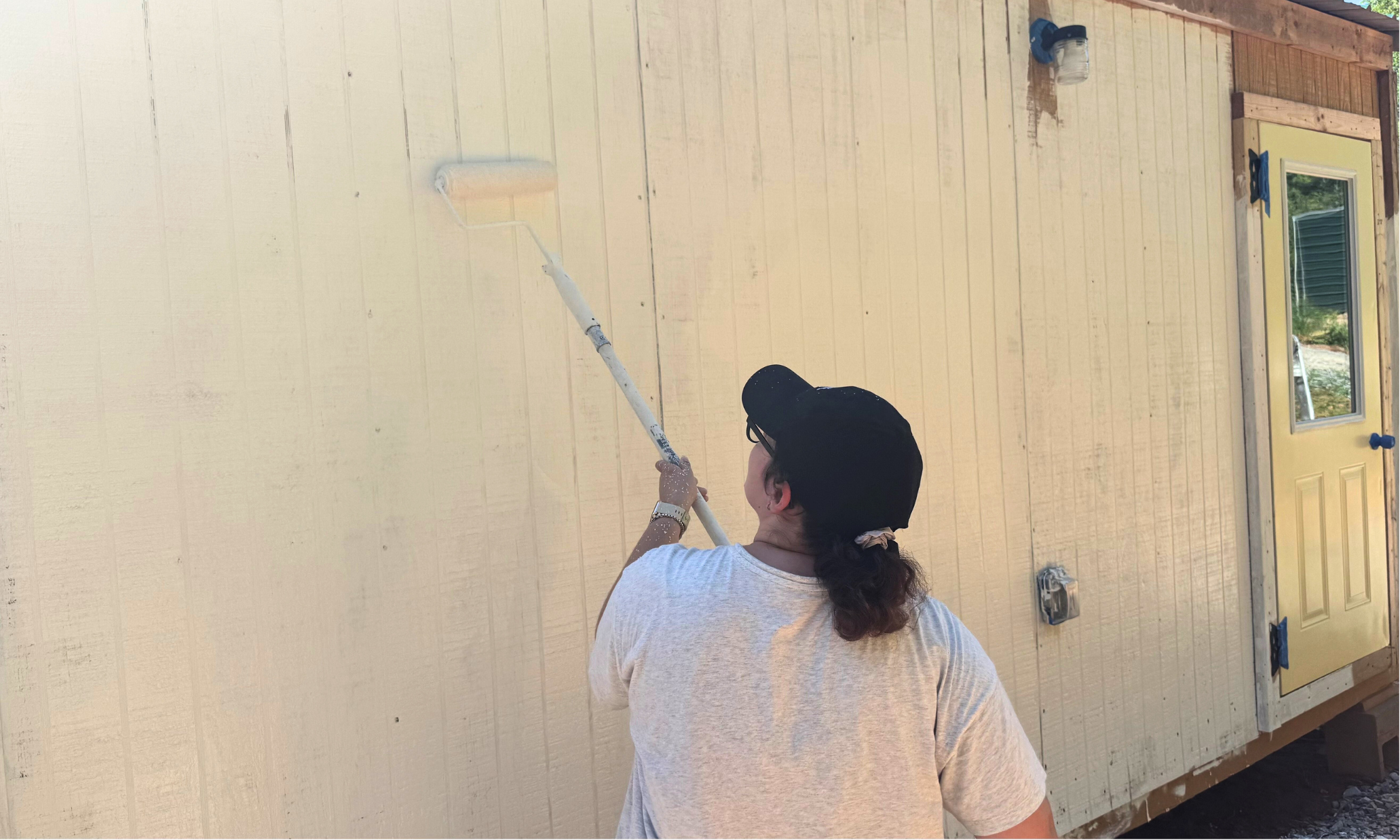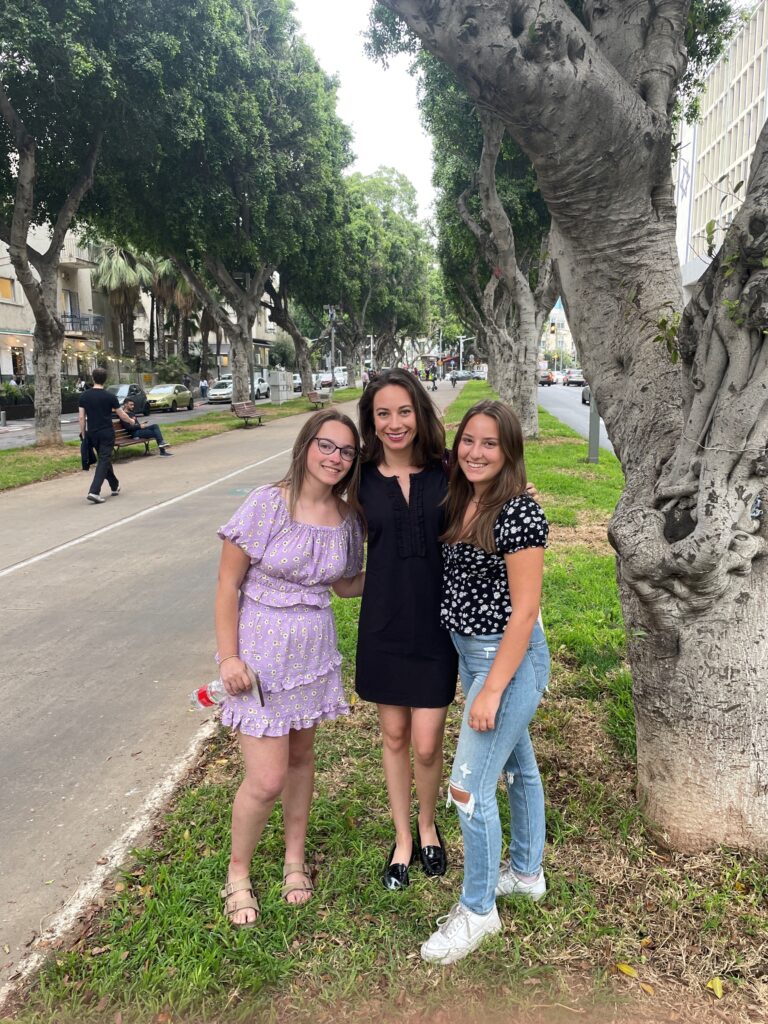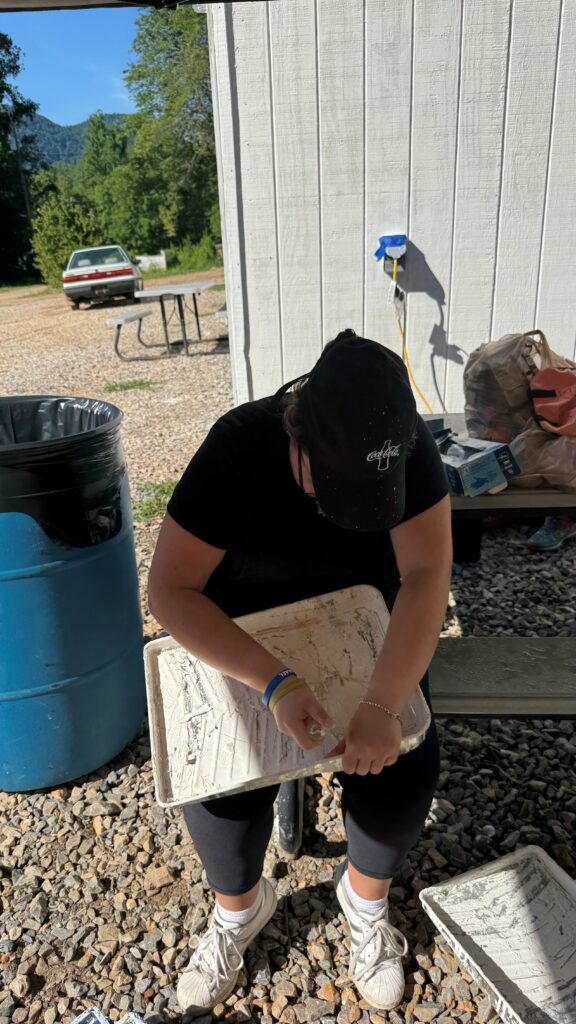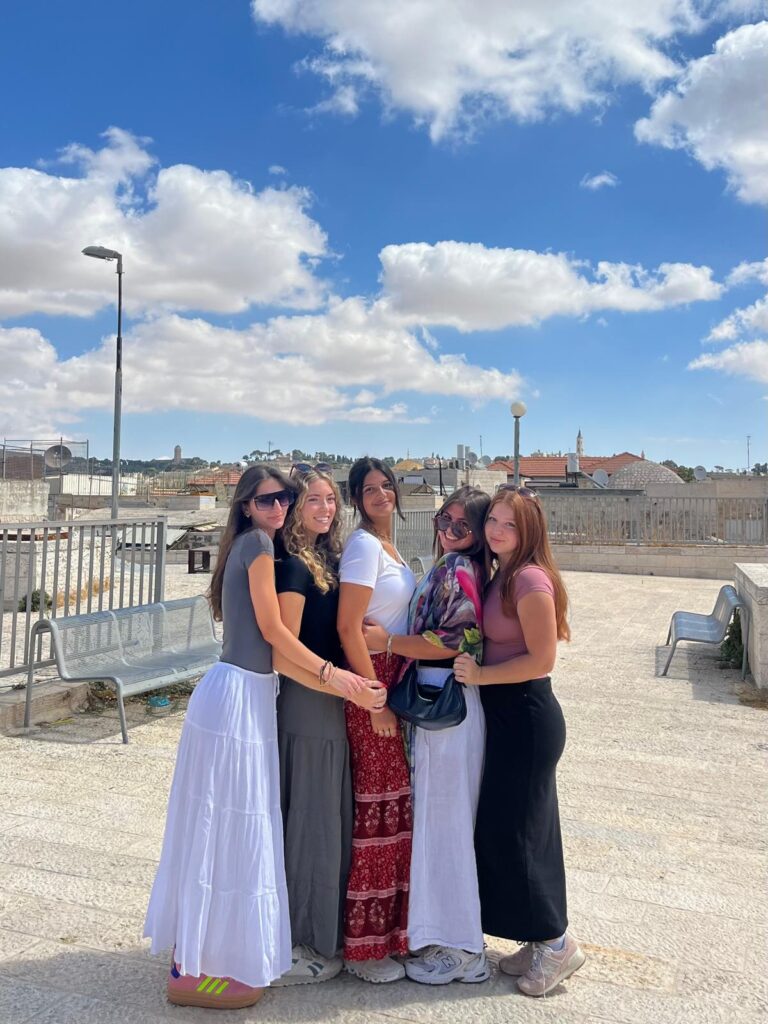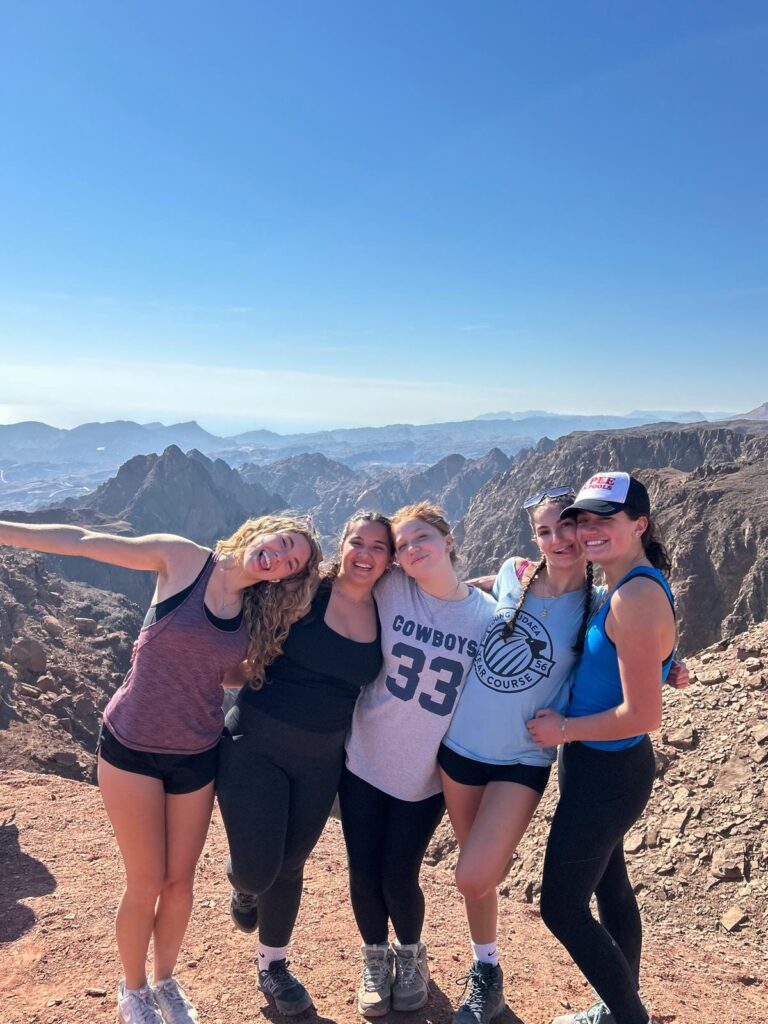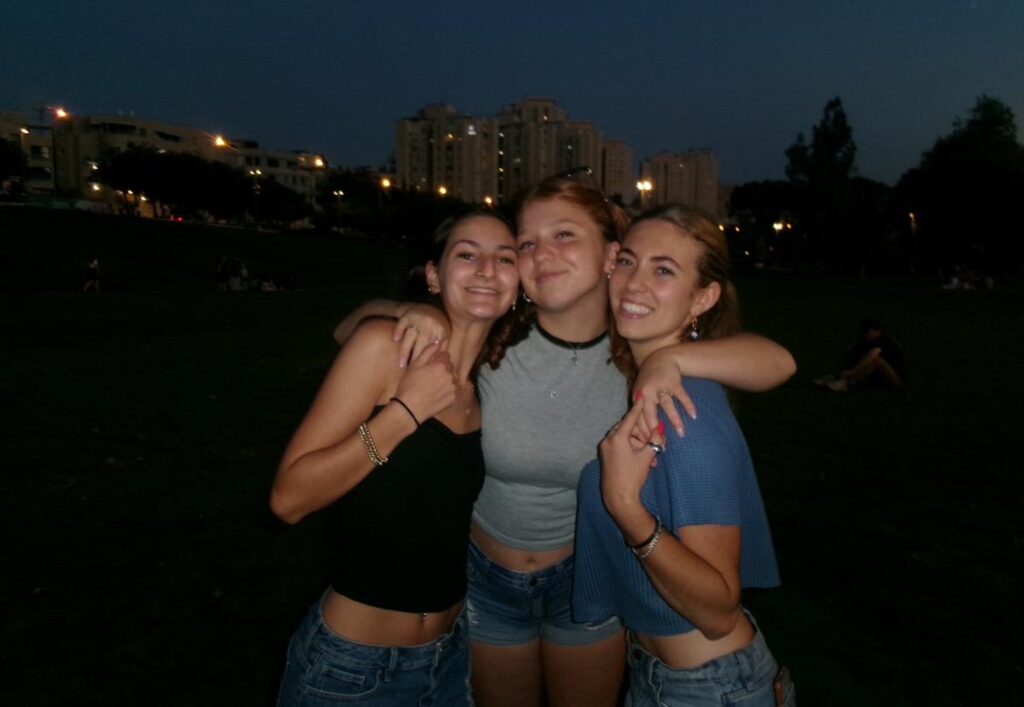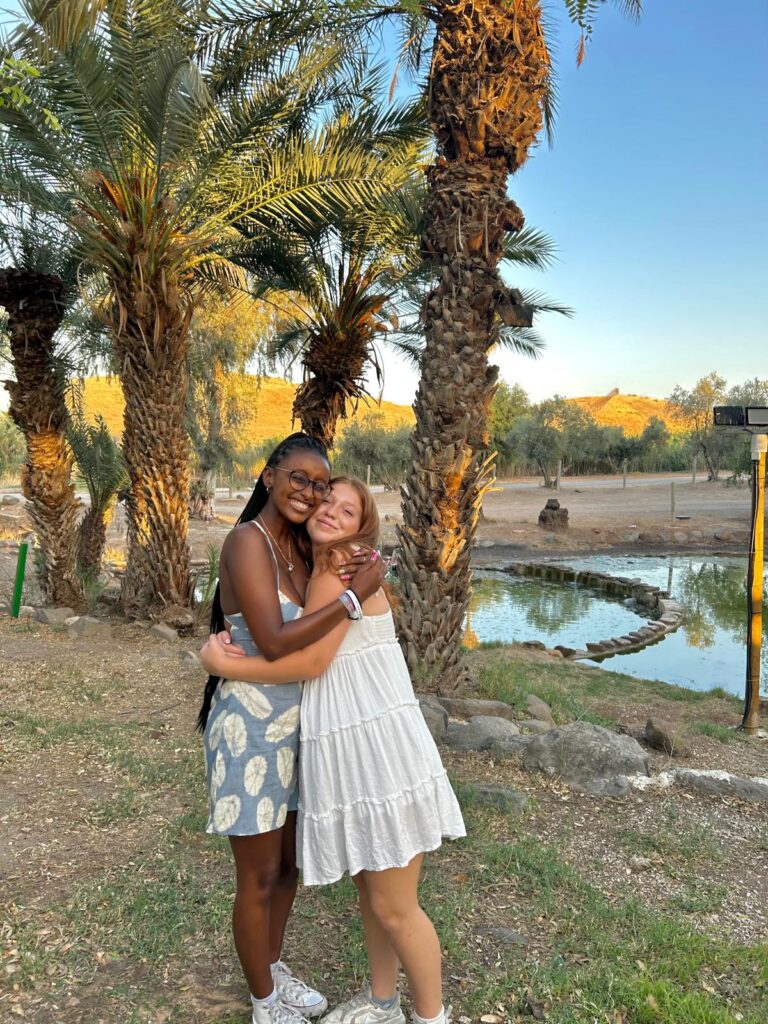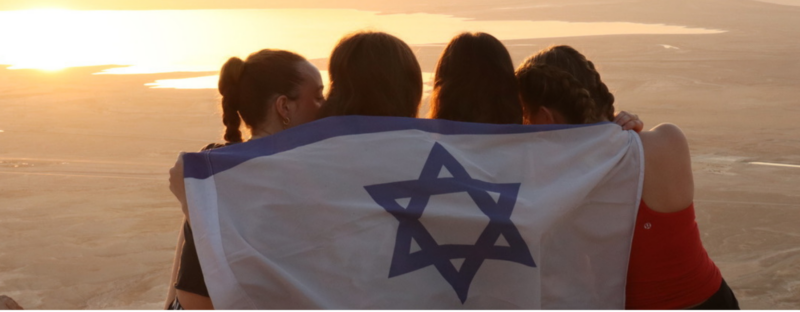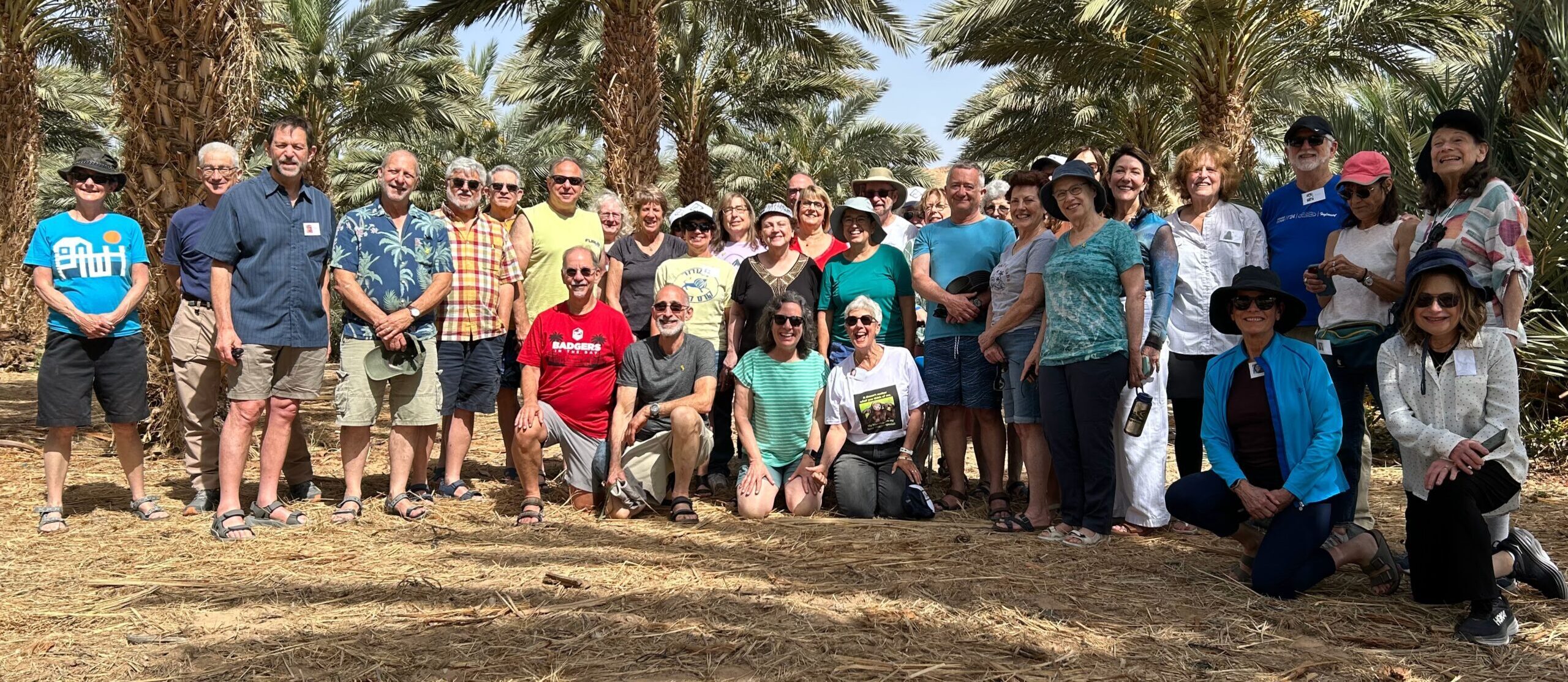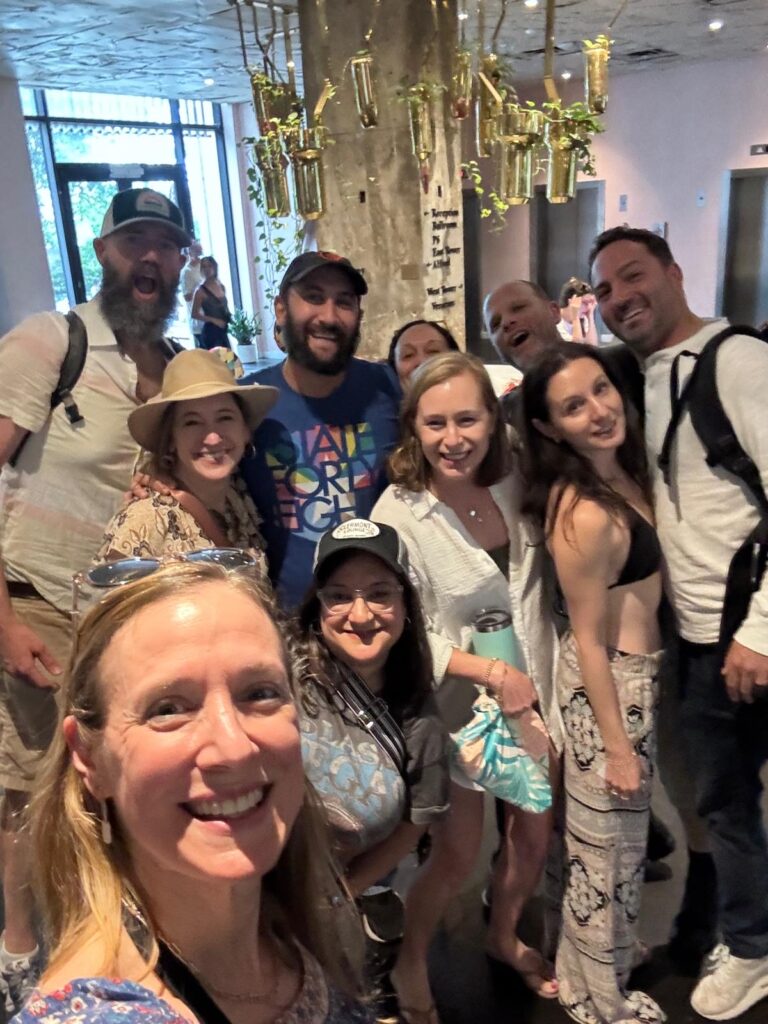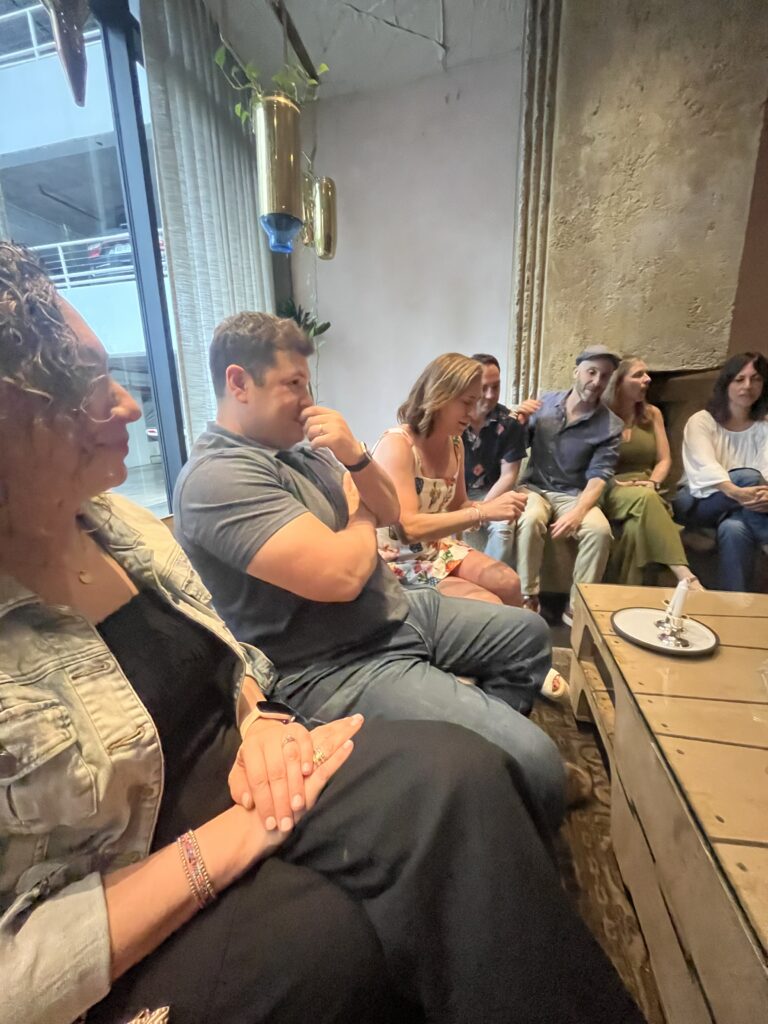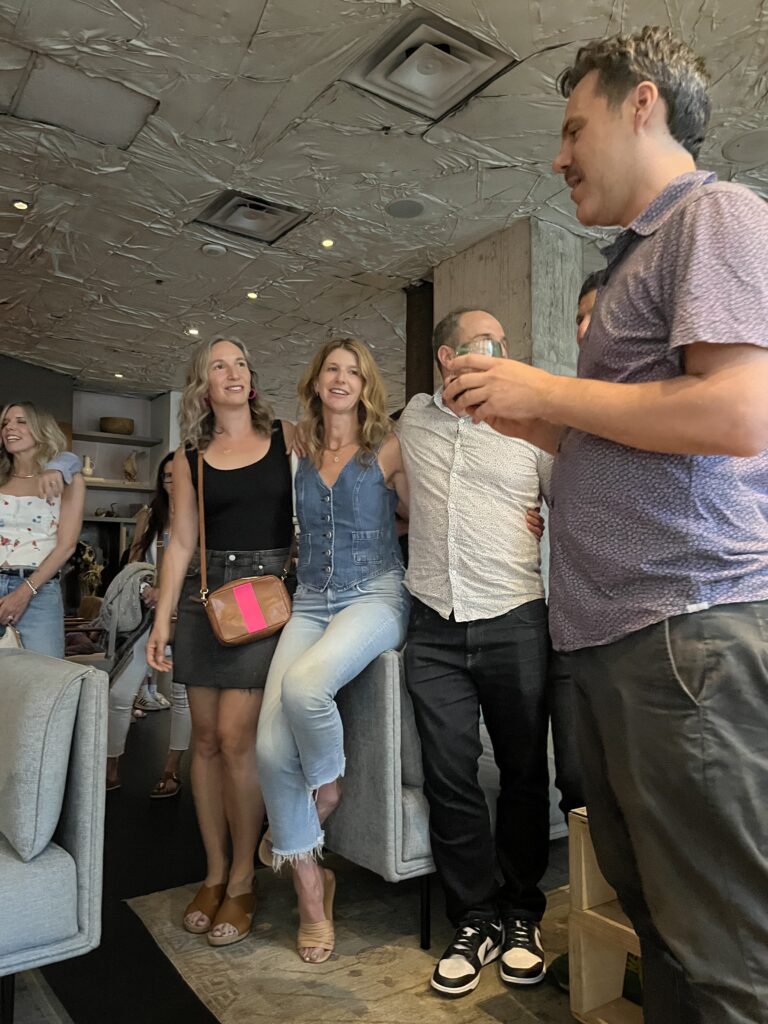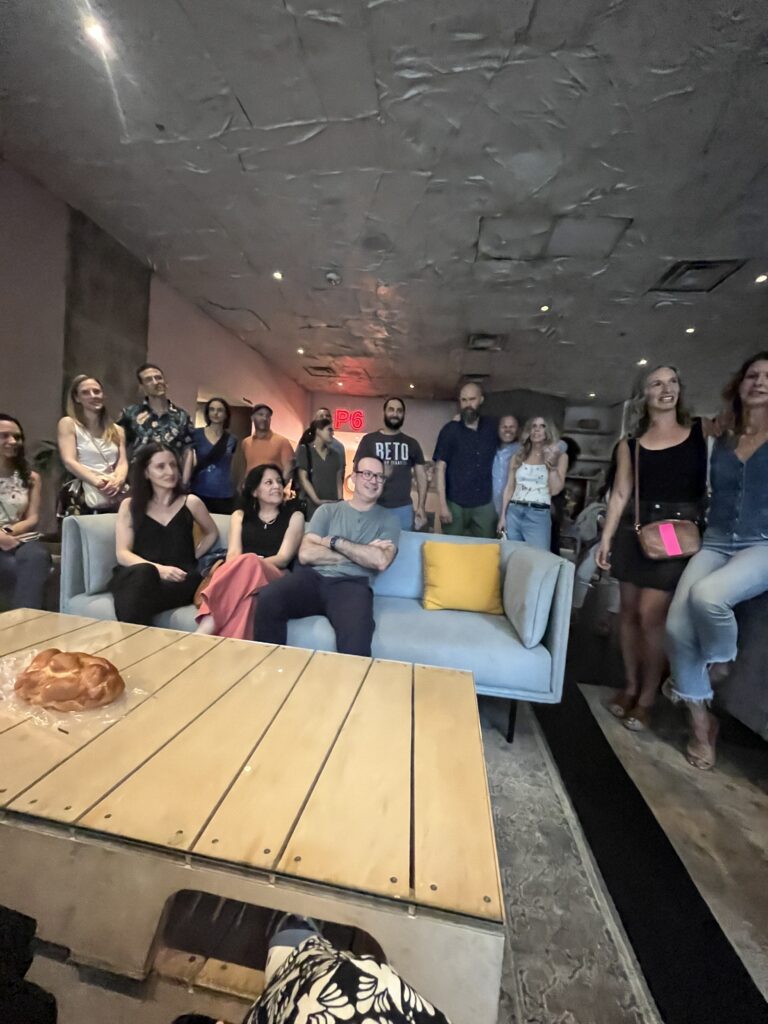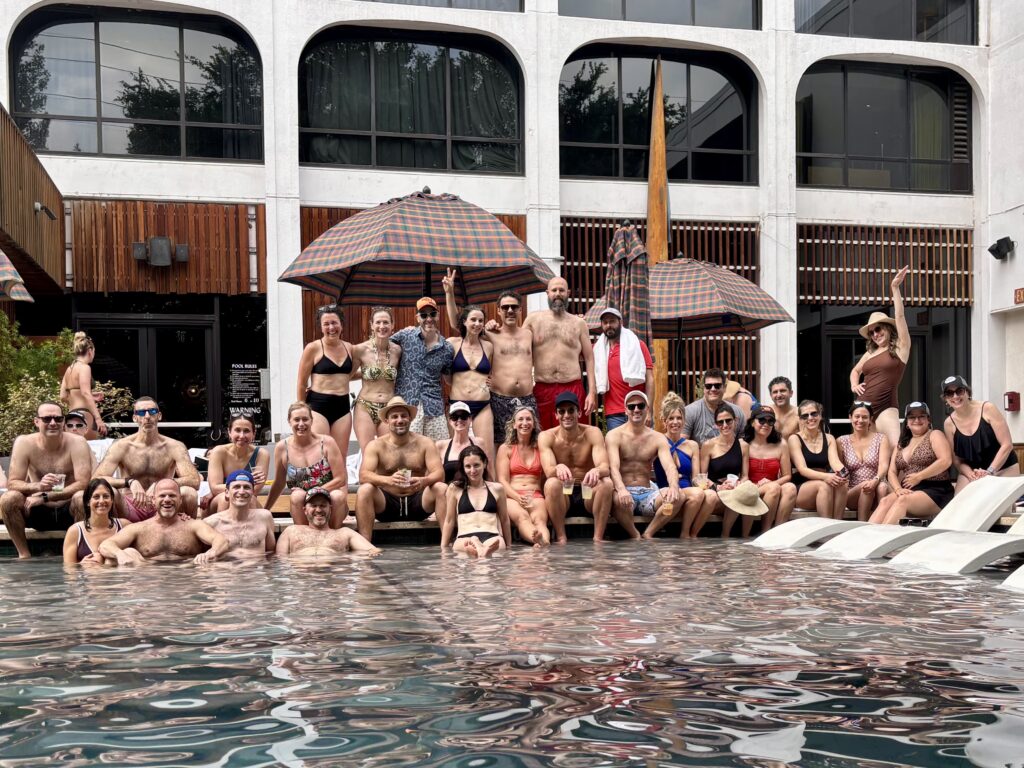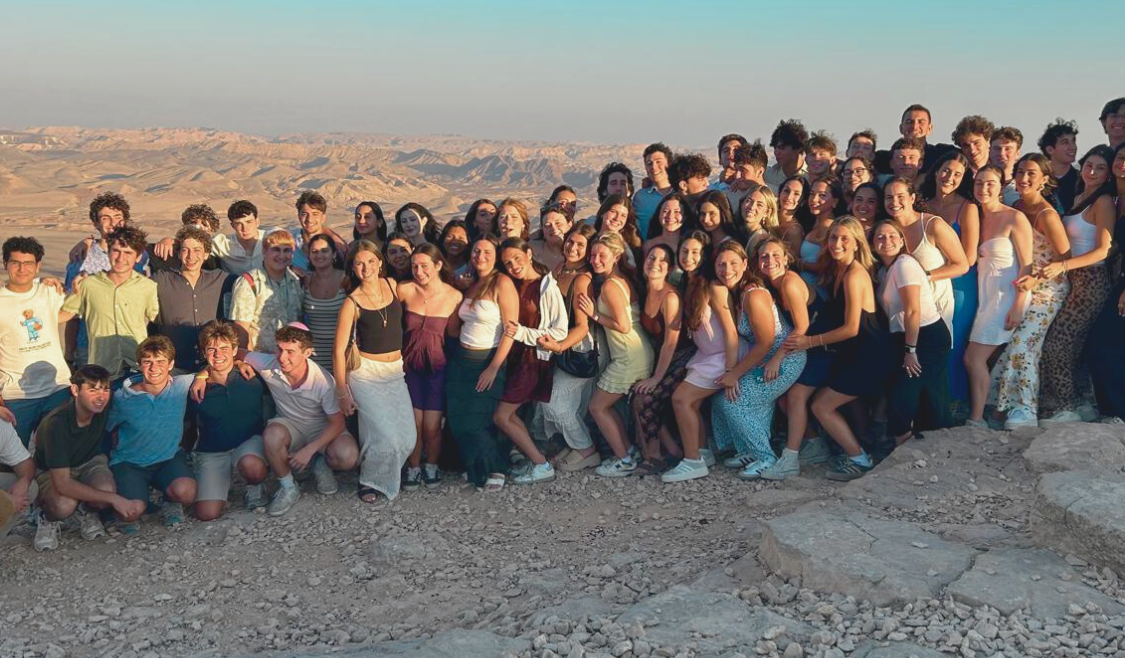By Margot Turk Calacuda, Year Course 1974-75
Growing up in the youth movement Young Judaea taught me many things that attribute to who I am today. One of the biggest lessons? That there are friends, there is family, and then there are those rare friends who become your family. My adrenaline is at a high level after spending a week with my “family friends.” The 1974-75 Year Course in Israel had a big impact on our lives, and together we celebrated the experience we had 50 years ago.
I had a small pre-reunion with a few friends in Haifa to catch up on life from the past 50 years. We had a culinary tour in Wadi Nisnas, the most authentic market and traditional market that emphasizes coexistence. Chef Avi showed off his skills in our kitchen for Friday night dinner while I showed off my clown toys. Early Shabbat morning we walked to Carmel Hai Bar, the nature reserve devoted to the raising of endangered and extinct animals. We drove to visit my Druze friend on the mountain for pita and labane before heading down to Ein Hod the Artist village.
In the evening we dined at my favorite downtown bistro and followed by a walk to to view the graffit in Haifa. After a night’s sleep for most, we met at the Louis Promenade for the best views of the lower section of Haifa, the bay all the way to Lebanon.
We had brunch at the fun Cafe Diyoma which gives a feeling of what cafes used to be like in Haifa. We drove to Nesher to the suspension bridges to “hang out”. We hiked with my speaker in hand and danced until suddenly a group of elementary school children joined us. I played a song that they would know and we all danced. Their madrich asked us “old ladies” if we’d ever heard of a camp in NY called TY. Really? Of all the places and people to ask! He was a shaliach at TY in 2009.
Laughing all the way back to the car we drove to Haifa University and up to the 30th floor of the Eshkol tower to see the panoramic view of Haifa and the surroundings. Our evening was down at the beach to meet my daughter and grandsons before our dinner at the Beach Club. With the sunset in the background, we got ready for our early wake up to take the train to Savidor station to meet all of our Chevre.
Next we took the long drive down to Kibbutz Ketura. We began with a brief walk to see some of the changes in the Kibbutz and ended up at the pool for a lovely BBQ dinner. Dinner was followed by our ice-breakers and a discussion about Israel over the past 50 years.
The next morning after breakfast we headed to the date fields. It was especially meaningful for those that planted trees 50 years ago. We continued on down to Eilat to have a choice of snorkeling or the underwater observatory. We had lunch at the Ice Mall and back to Kibbutz for free time plus the Argan Oil production tour. This was followed by a very moving Memorial Celebration of Life for those that had left us too soon. Sitting in the hut we reminisced about wonderful people we were fortunate to have had in our lives and no longer alive to make new memories together with us. We had dinner tasting beers and pizza at Beerzinut. That evening we got down and wild with karaoke and storytelling.
The morning began with an amazing hike, climb, and crawl at Timna park, a lunch of ice cream at Yotvta, and then back to kibbutz to get muddy on our faces.
We walked back to our meeting room for an inspirational panel discussion of how YJ impacted our lives in terms of activism.
We then had a quick talk about Medical Clowning in Israel (hmmm, I wonder who the clown was that spoke).
We made dinner together—pita on the saj—then hiked into the dark with ultraviolet lights for a magical Scorpion Safari. I wore white sneakers and loved seeing my feet light up as we danced under the stars. We ended the night with a cozy kumsitz, where our talented Texas crew brought guitars and voices for an unforgettable evening of nostalgic songs.
On the final day of departure we were accompanied by music like, “I had the time of my life”, “You’ve got a friend”, and “Leaving on a Jet Plane”, we hugged and boarded our bus with a stop at Sde Boker to pay respects to David Ben Gurion’s gravesite.
We disembarked at Savidor Station in Tel Aviv with more hugs repeating “until we meet again’ and ‘l’hitratot’ because we neve say goodbye. I love my friends that have made my life better just by being in it, and I thank you. It is true when they say that Young Judaea friends are forever.
Why am I writing this post?
To all Young Judaea alumni—before, during, and after 1974-75: If you will it, you can do it!
We were awesome then, and we’re still awesome now. Reunions remind us of that.
Leah Kayman of Keren Kolot at Kibbutz Ketura devoted so much time in assuring that we were happy. Details are so important.
Abraham Silver (YC 1975-76) was our passionate guide and definitely an integral part of the success of our reunion.
Last but not least, the determination of 25 participants that traveled so much distance (with stops due to cancelled flights to Israel) to join over 15 participants here in Israel. Your efforts despite delays, sirens, schlepping showed us all that it was worth the countless hours of emails, zoom talks, messages…. to make this all a success. On behalf of my partners in crime on the committee we embrace you all with love and laughter.
See more pictures from the reunion!
Ready to plan your Year Course reunion? Email alumni@youngjudaea.org and we’ll get you started!
